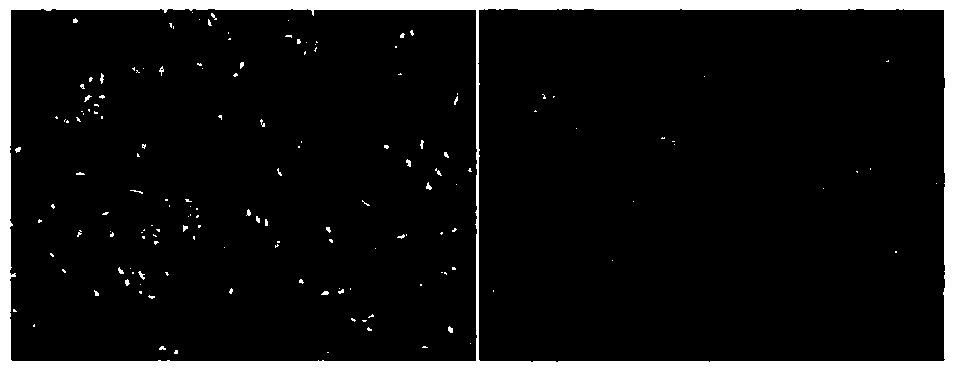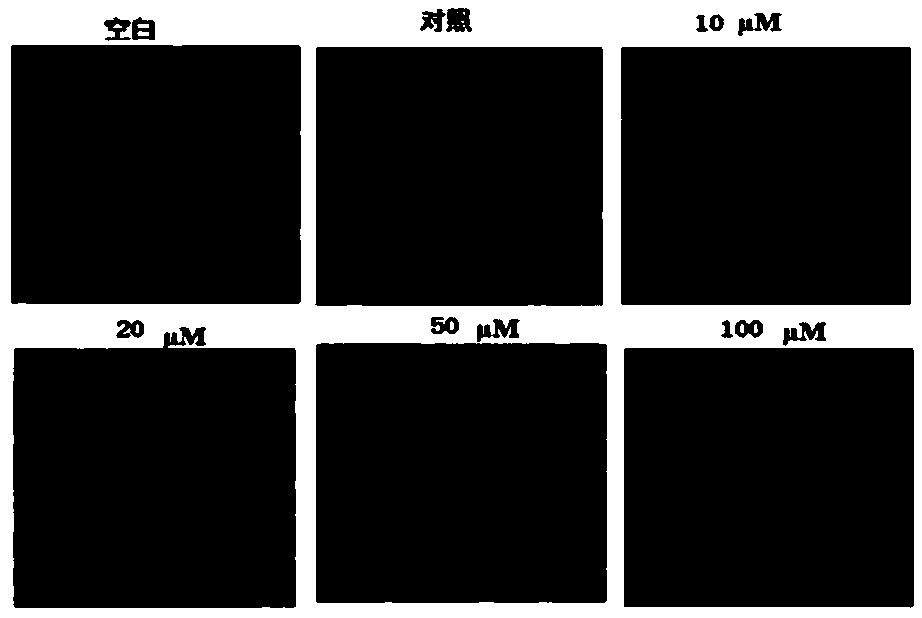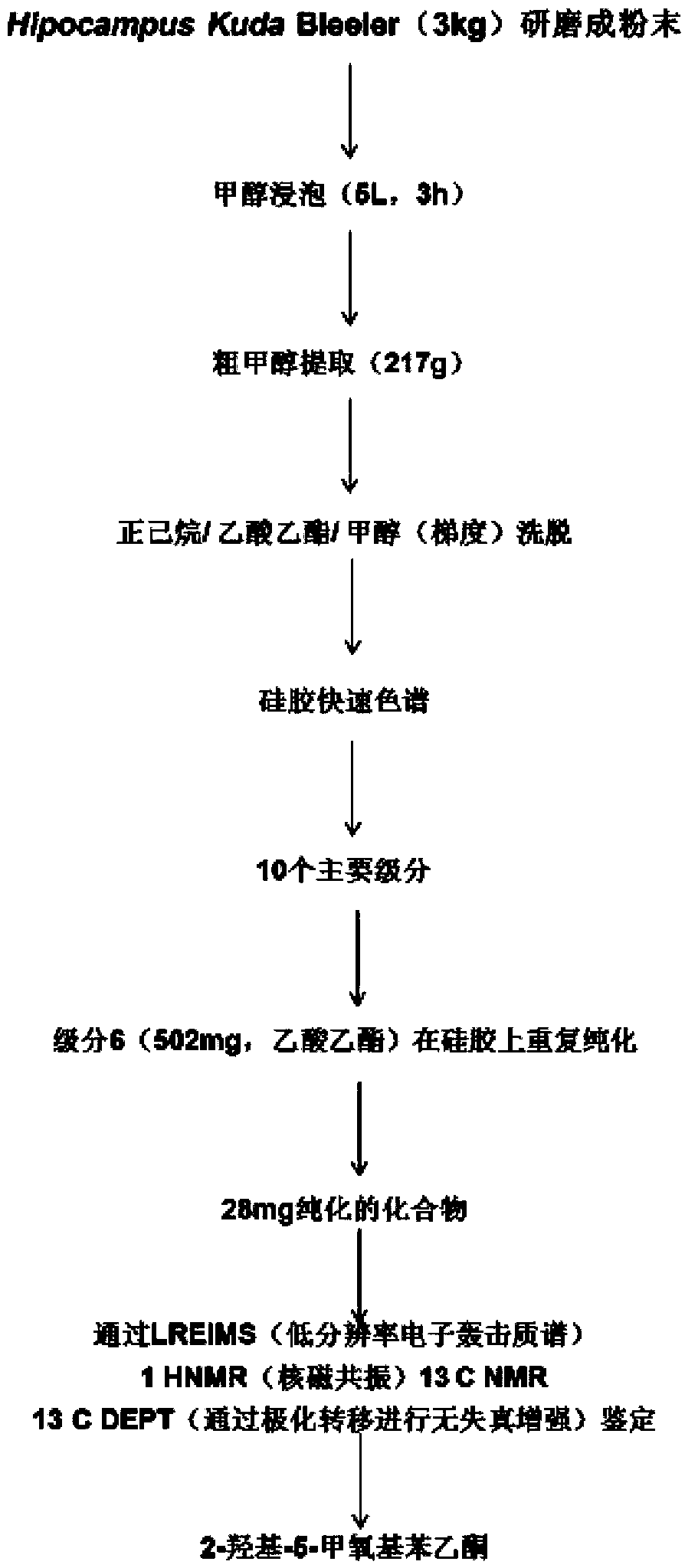Application of shippocampus extract 2H5M in preparation of drug for preventing and treating neurodegenerative diseases and health product of drug
A neurodegenerative, 2H5M technology, applied in nervous system diseases, neuromuscular system diseases, antipyretics, etc.
- Summary
- Abstract
- Description
- Claims
- Application Information
AI Technical Summary
Problems solved by technology
Method used
Image
Examples
Embodiment 1
[0036] Example 1: Preparation of hippocampus extract 2H5M
[0037] The compounds used in this experiment were isolated from Hippocampus kudaBleeler in the sea area of Zhoushan, Zhejiang Province, and the identification was completed by Professor Deng Mingdeng, a zoologist at Changchun University of Traditional Chinese Medicine in China. The extraction and identification of compounds such as figure 1 shown. The structural formula of 2H5M is as follows:
[0038]
Embodiment 2
[0039] Example 2: Recovery, passage and cryopreservation of mouse microglioma cells (BV-2)
[0041] Take out a cryopreservation tube of frozen BV-2 cells from the liquid nitrogen tank, immediately put it into a water bath at 37°C and shake it constantly. Transfer 1 mL of cryopreservation solution to a cell culture bottle filled with 20 mL of complete medium in an ultra-clean workbench, and place it in a cell culture incubator for culture. After 4 hours, the culture flask was taken out, the cell morphology was observed and the medium was changed, and the culture was continued.
[0042] 2.2 Cell passage
[0043] Take out the cell culture bottle from the incubator and put it into the ultra-clean bench, pour off the culture medium in the culture bottle, add 1mL PBS to wash the cell surface, repeat twice; then add 1mL trypsin to digest, shake the culture bottle gently Infiltrate to the cell surface. Observe the digestion status under a microscope. Whe...
Embodiment 3
[0046] Embodiment 3: MTT colorimetric experiment
[0047] 3.1 Experimental principle
[0048] MTT colorimetry is a method used to detect cell viability and growth. The principle is: succinate dehydrogenase in the mitochondria of living cells can reduce exogenous MTT (3-(4,5-dimethylthiazole-2)-2,5-diphenyltetrazolium bromide) to Formazan forms water-insoluble blue-violet crystals and deposits in cells, but dead cells do not have this function. Dimethyl sulfoxide (DMSO) can dissolve formazan in the cells and generate a purple solution, and use a microplate reader to measure the absorbance at OD540nm wavelength. The amount of MTT formed is directly proportional to the total number of living cells.
[0049] 3.2 Experimental steps
[0050] 100 μL of BV-2 cell suspension (obtained from Example 2) was added to each well of a 96-well plate, and cultured in an incubator. After 24 hours, the old culture medium was discarded, and culture medium containing sample concentrations of 1...
PUM
 Login to View More
Login to View More Abstract
Description
Claims
Application Information
 Login to View More
Login to View More - R&D
- Intellectual Property
- Life Sciences
- Materials
- Tech Scout
- Unparalleled Data Quality
- Higher Quality Content
- 60% Fewer Hallucinations
Browse by: Latest US Patents, China's latest patents, Technical Efficacy Thesaurus, Application Domain, Technology Topic, Popular Technical Reports.
© 2025 PatSnap. All rights reserved.Legal|Privacy policy|Modern Slavery Act Transparency Statement|Sitemap|About US| Contact US: help@patsnap.com



